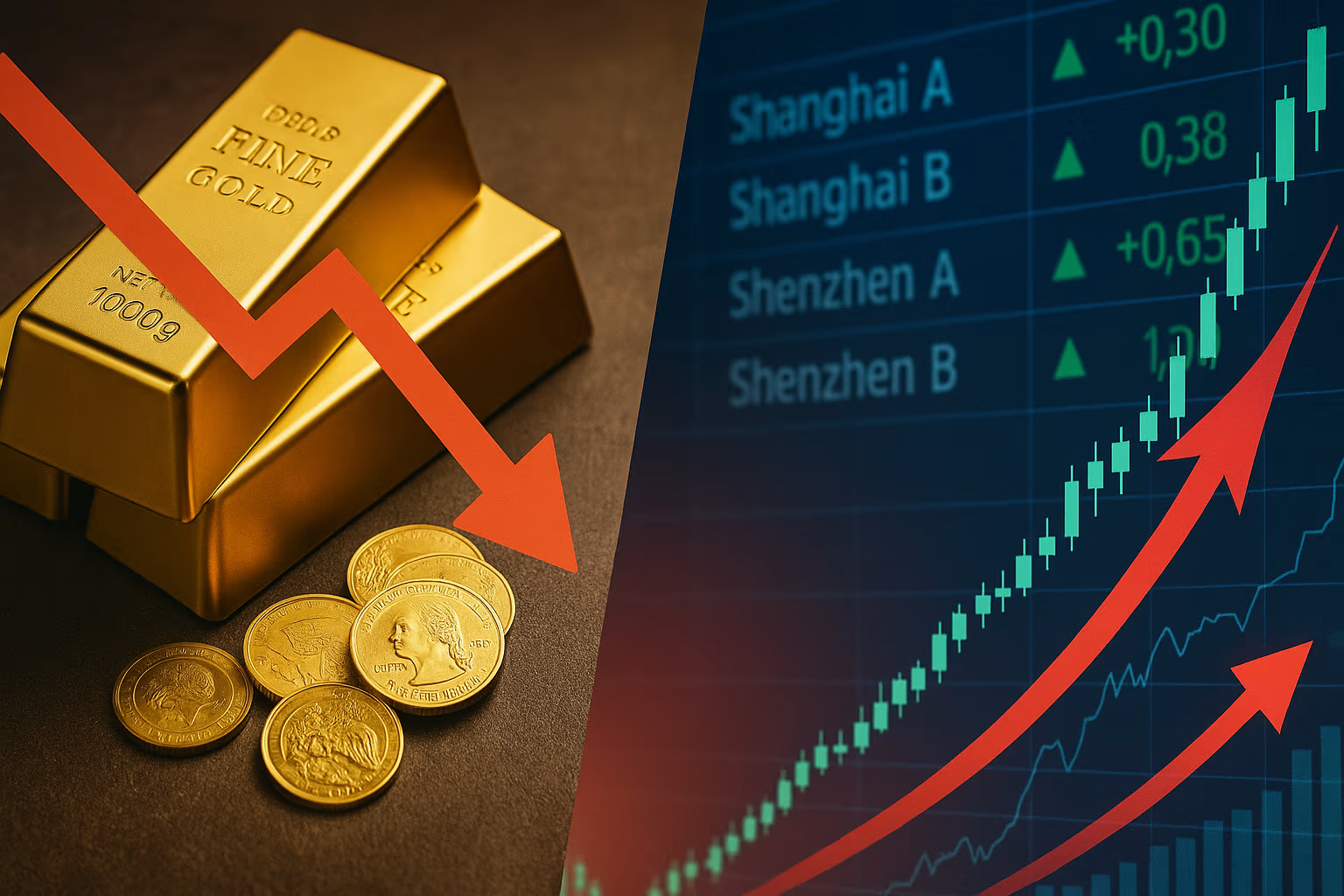China’s financial markets are witnessing a significant shift in investor behavior as domestic traders and institutions move away from gold holdings in favor of equities. The change has triggered record-breaking outflows from gold exchange-traded funds (ETFs), signaling a notable pivot in sentiment as investors look to capture higher returns in the stock market amid policy stimulus and economic recovery hopes.
The phenomenon underscores the dynamic nature of capital allocation in China, where investor priorities can shift rapidly in response to macroeconomic cues, government policy shifts, and global market conditions. While gold has long been a preferred safe-haven asset for Chinese investors, the current environment is prompting a reassessment of where the best opportunities lie.
Record Outflows from Gold ETFs
Recent data from China’s financial regulators and ETF providers shows that gold-backed ETFs have experienced their largest monthly outflows on record. Billions of yuan have exited these funds in just weeks, reversing the strong inflows seen earlier in the year when economic uncertainty and currency fluctuations boosted demand for safe-haven assets.
Several factors are driving the trend. First, gold prices have remained under pressure as the U.S. dollar stabilizes and U.S. Treasury yields stay elevated, reducing the appeal of non-yielding assets like gold. Second, the perception that China’s economy may be turning a corner — supported by targeted policy measures from Beijing — is encouraging investors to re-enter the equity market.
Stimulus Measures Fuel Stock Market Optimism
The shift toward equities has been fueled by a combination of policy support and market expectations. The Chinese government has introduced a series of measures aimed at boosting domestic consumption, stabilizing the property sector, and encouraging foreign investment. Lower reserve requirement ratios for banks, tax incentives, and targeted lending to priority sectors have all contributed to renewed optimism in China’s growth outlook.
Equities tied to technology, renewable energy, and domestic consumption have been among the primary beneficiaries. These sectors align closely with Beijing’s long-term strategic goals, making them attractive targets for institutional and retail investors alike.
Investor Psychology: From Safety to Growth
Investor sentiment plays a crucial role in asset allocation decisions. In early 2025, heightened concerns over global economic uncertainty, geopolitical tensions, and a weakening yuan drove many Chinese investors toward gold. However, as market conditions shifted and confidence in domestic economic resilience grew, the calculus began to change.
The move away from gold toward stocks reflects a classic rotation from defensive to risk-on assets. Investors appear more willing to tolerate short-term volatility in exchange for the potential of higher returns, particularly in sectors that are expected to benefit from China’s policy direction.
Impact on the Global Gold Market
China is one of the world’s largest consumers and holders of gold, meaning shifts in its domestic demand can have global repercussions. The record ETF outflows have contributed to downward pressure on gold prices in international markets, particularly in Asia. While physical gold demand from jewelry buyers and central banks remains steady, the sharp reduction in investment flows highlights how financial market sentiment can impact commodity prices.
Global gold traders are closely monitoring whether this trend is temporary or marks the start of a more prolonged shift in Chinese investor behavior. If equity markets continue to perform strongly, gold may struggle to regain its safe-haven dominance in China in the near term.
Risks to the Stock Market Rally
While the move toward equities reflects improved market confidence, it is not without risks. China’s economy still faces challenges, including a sluggish property market recovery, ongoing trade tensions, and the potential for external shocks from the global economy. If corporate earnings fail to meet expectations or macroeconomic data disappoints, investors could once again seek refuge in gold.
Moreover, the Chinese stock market has historically been volatile, with retail investors playing a significant role in driving price swings. This means the rally could be vulnerable to sudden reversals if sentiment turns.
The Yuan’s Role in Investment Decisions
Currency dynamics are also influencing the rotation from gold to equities. The yuan’s recent stabilization against the U.S. dollar has eased pressure on capital outflows and improved domestic investment sentiment. For some investors, a stable currency environment reduces the need for gold as a hedge, making equities a more attractive proposition.
At the same time, a stronger yuan boosts the purchasing power of Chinese investors in global markets, potentially encouraging cross-border investments in foreign-listed Chinese companies and overseas assets.
What This Means for Global Investors
For global investors, the shift in Chinese capital flows offers both opportunities and challenges. On one hand, increased demand for Chinese equities could support valuations and create entry points for foreign investors looking to gain exposure to the world’s second-largest economy. On the other hand, reduced gold demand from China could weigh on bullion prices, affecting portfolios with significant precious metal holdings.
Institutional investors with a diversified global strategy may view this as a moment to reassess their allocations, especially in light of shifting trends in emerging markets.
A Balancing Act Between Risk and Safety
Looking ahead, whether this trend persists will depend on the interplay between China’s economic recovery, policy support, and global market conditions. If the domestic economy continues to strengthen and corporate earnings improve, equities may retain their appeal. However, any resurgence in uncertainty — whether from domestic policy missteps, external shocks, or currency volatility — could prompt a return to gold as a defensive asset.
The current shift is a reminder of the fluid nature of investment strategies in fast-moving markets like China’s. For now, investors are signaling that they see more upside in growth-oriented sectors than in holding gold, but the balance between risk and safety can shift quickly.





